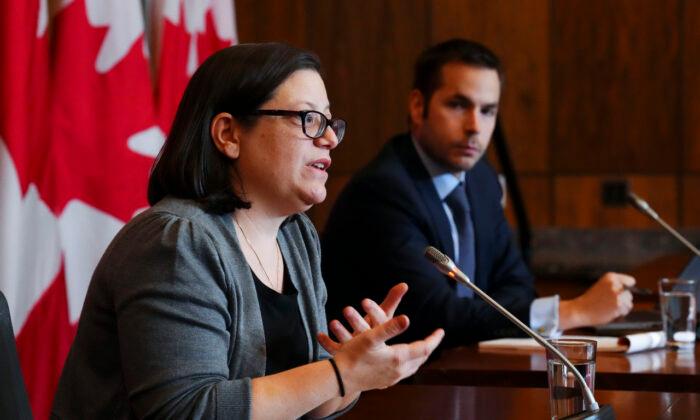Among those who said they delayed their plans to purchase a home, 40 percent said they would still buy, and 60 percent said they would put their plans off indefinitely.
“In the most expensive markets in the country—Toronto and Vancouver and the surrounding areas—part of the sidelined demand is putting increased pressure on the rental market,” said Yolevski.
Homebuyers ‘On the Defensive’
The Royal Bank of Canada (RBC) Monthly Housing Market Update said that “the Bank of Canada’s rate hiking campaign keeps home buyers on the defensive.”According to RBC, resale action was at the slowest it has been for the past three and a half years at 443,000 units.
Although the current softness in the housing market is concentrated in Ontario and B.C., Quebec and parts of Atlantic Canada are also following suit.
Halifax’s house price index (HPI) dropped by 6.3 percent in the past three months, with a 3.9 percent drop in August alone. Saint John also declined steeply in August, where the HPI fell by 4.2 percent.
Montreal’s HPI dropped by 3.3 percent, and in the Greater Toronto Area, it fell by 5.8 percent in the past three months.
“For many potential buyers, home purchasing prospects remain grim. The partial reversal of earlier massive price increases is small comfort at a time when sharply higher interest rates cut deeply into affordability,” Robert Hogue, assistant chief economist at RBC, wrote in his monthly housing market update report.

Projections of New Housing Units Not on Par for Affordability
The Canada Mortgage and Housing Corporation (CMHC) says that 22 million homes need to be built by 2030 to restore affordability. The majority, 1.85 million, will be required in Ontario alone.CMHC estimates that there will be 19 million housing units by 2030 if the current rate of construction continues. This would be off their projected goal to restore affordability by about 3 million units.
The last time housing was affordable was in 2003 and 2004, according to CMHC. At that time, buyers in Ontario would pay an average of 40 percent of their disposable income on a house, while those in B.C. would have had to pay around 45 percent of their disposable income.
In comparison, on average, households in 2021 would have had to spend almost 60 percent of their disposable income to pay for a house in Canada.
The biggest hurdles the CMHC sees to hitting the target for affordability are delays due to lengthy approval processes, skill shortages and supply chain challenges, and a rise in the price of construction.





